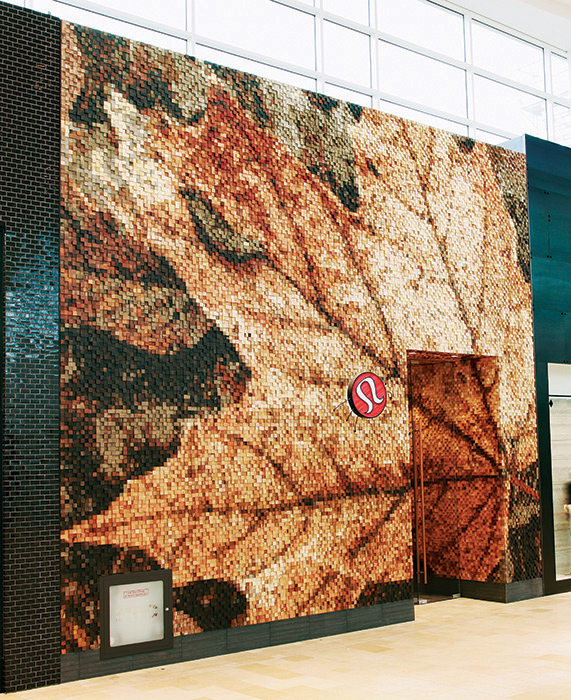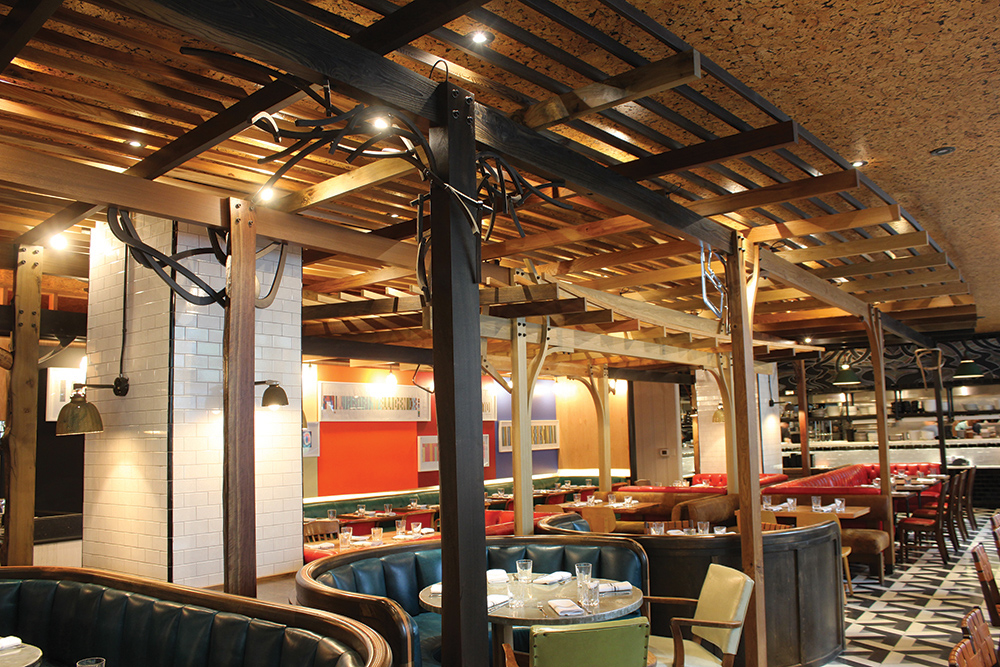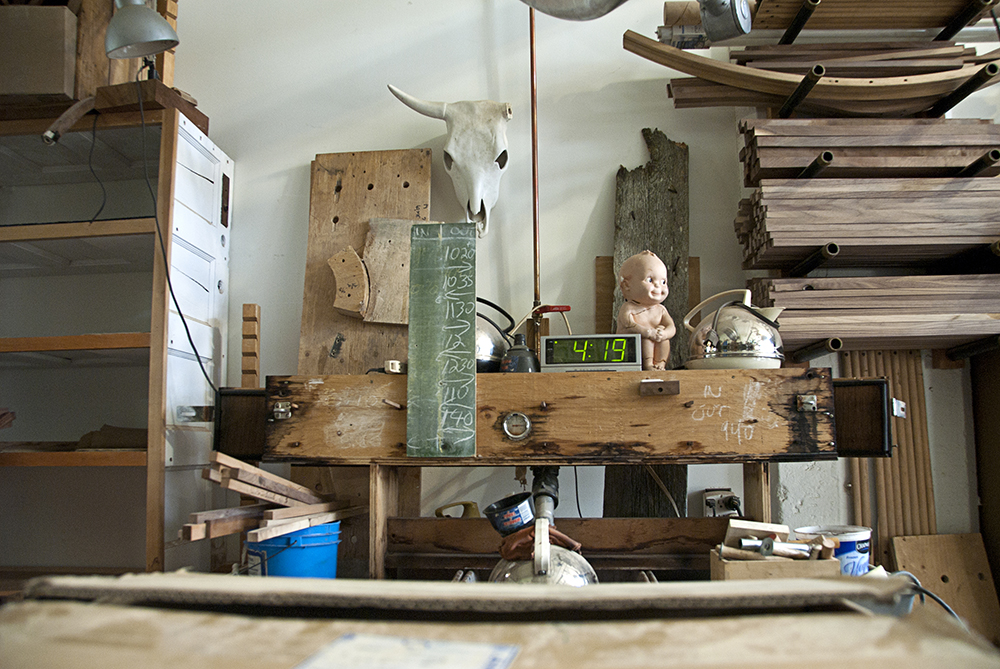“The way we overcome disagreements on a design is by making prototypes.”—Lars Dressler<
Lars + Jason Dressler: Co-Founders, Brothers Dressler / Toronto ON
brothersdressler.com
“the way we overcome disagreements on a design is by making prototypes.”—lars dressler
How do you go from being brothers to working together?
We are twins, but we are very close twins. We started with Legos while growing up, and we constantly played together. We built skateboard ramps and made things for friends in our garage out of whatever we could get our hands on. The first collaborative piece was when we were 18, and learning woodwork. Our family was building a cottage in northern Ontario, and we made whatever we could, using whatever off-cuts and extra lumber that were laying around. We made a chair, tables, and other things. Jason studied mechanical engineering and I studied chemical engineering in school. We played basketball together in college, and later had separate stints playing professional overseas for a few years. Then we went our own ways for a decade, traveling and working other jobs, while intermittently getting together to make things. Jason went back to school for design at Sheridan College and we routinely discussed the dream of a joint business. After he graduated, we decided to make it happen. I quit my job in media and we went into Brothers Dressler full-time in 2003.
Brothers Dressler Portrait
photo: voula monoholias, courtesy of bd
How does your studio inspire/facilitate collaboration?
Our work is integrated into our environment. Everything we do populates the space. We use a lot of found objects, so we’re always collecting things and this place looks a lot like a museum or flea market. Artifacts are everywhere, and that influences us every time we walk by stuff. Lots of little projects are half-started in piles all over the studio; beaver-chewed sticks and leftover off-cuts are everywhere. Yesterday, someone trashed a bunch of smashed guitars, which is really sad. So we salvaged them, and we will see if we can do something with them as they have beautiful wood.
Our studio is an old munitions plant with 30-foot ceilings. They closed-off the windows many years ago, but we are in the process of knocking holes in the walls to create even more light, although there are already a couple of 15-foot sky lights. Jason and I are continuously evolving the studio. We curate our environment. It is so important for us to feel comfortable and inspired by where we are. There are separate loft areas of our studio for design work, and we have a wood-shop that we share with a few other woodworkers. Since we often work with large-scale materials, we need the room to manipulate large objects. But we also have pocket spaces to leave projects in process. Quite often, we’re working on 20 to 30 different projects at once, anything from very small to 30 feet long. My personal workspace is often organized chaos, but I know where everything is even with so many things going on.
Branches Chandelier
photo: bd, courtesy of bd
We work well in our studio at night. During the day, we have a number of people working with us and we spend a lot of the time with them to get things done. Sometimes Jason and I both come back in the evenings for a second shift, after we’ve spent some time with our kids. That’s when we get to do most of our creative work.
Do you have individual roles in the collaborative?
There is definitely a division of labor. When we first started collaborating, Jason had more direct design experience, so he would initiate most of the pieces we created and did the technical work. We both built together and honed the work. Then the reality of running a business kicked in, which neither one of us specialized in or wanted to do. I took on the role of considering the whole organization and operation. But the creative work happens equally. We collaborate on concepts and making things, or one of us will come up with the concept, and we’ll refine it together, although Jason will do much of the technical refinement and specific details.
Jason has a tremendous amount of experience in drawing and CAD work, so the computer is kind of his department, along with other technical aspects. He can quickly iterate ideas. Some of the initial discussions will happen together at Jason’s computer because he’s very quick at throwing things up on screen and making it look real in a short amount of time. Whereas, I often scribble ideas down and then go get some materials in my hands right away. I also specialize in the lighting and electrical side. Quite often, we go to different rooms or areas of our studio to work out details. We are very material-based designers, so rather than just manipulating things on the computer, we like to get our hands dirty experimenting, and we enjoy the process of making things. Our process is this continuous back-and-forth of taking it to the computer to hone-in on dimensions and scale, then bringing it back to our workbenches and having open discussions: “Have we thought about this? Have we thought about that?” Sometimes, we will each take it a separate direction and see which works best. The collaborative is constant movement, seesawing ideas, and making continual progress on a project.
Ultimately, we share the same DNA, so we do have a lot of similar ideas and preferences, and I think that helps—even if it’s only a vote of confidence on the direction that one of us is going. But our individual life experiences, histories, and influences are quite different, though we are aesthetically very similar. Because the other person is often on the same page, it’s easier to talk or know what the other person is thinking even before we speak. At this point, it’s hard to imagine not working together.
We do different kinds of work. For example, we’ve made wooden branching chandeliers, which originated from an interior design show that we did in Toronto, where we worked with Swarovski Crystal to make a special feature for their Branches Crystal exhibition in 2009. This piece evolved over the years with many custom versions. We’re always trying to do something that we’ve never done before, and this piece evolved from experiments in steam bending. Everything literally starts with a scribble. It’s about a feel. One way we approach our work is based on testing methods, rather than having an exact finished product or a solid idea. The Branches chandelier was initially a large-scale piece, but we wanted to make it into a product available to everyday people without 40-foot ceilings. We were able to experiment with different scales in CAD, before we made prototypes.
Lululemon Yorkdale Project Facade
photo: bob gundu, courtesy of bd
But some projects turn around exceptionally quick. We did a retail project in 2012 for a company called Lululemon in Toronto. We did a façade for one of their stores and collaborated with Quadrangle Architects. Lululemon called us up and said, “We have a 25’ x 23’ wall. Do you have any ideas?” I laughed and said, “Well, we always have ideas…” So I articulated to her a pixelated image made from thousands of little wood squares. They wanted it to represent the Ontario North, so I proposed an image of a leaf that I had taken a number years ago and they loved it. It was something that we had never done before, nor on that scale. Discussions started in June and it had to be done by November. The first few months were preliminary discussions. We ended up hiring 14 people to work with us for weeks just making the parts and putting them together. The finished product contained over 37,000 blocks and was very well received.
Who are the other people that work with you in your studio?
We have four additional, full-time, like-minded people. We also collaborate with Jason’s wife, who is a graphic designer and she works on our website. Everyone’s backgrounds vary: glass artists, woodworkers, jewelry artists, and some of them teach at local colleges. I have noticed that many old school woodworkers are loners, which is funny because Jay and I happen to be collaborative, woodworking loners. I am happy that I am able to run a business where I am able to employ all of these people. I get pleasure when people enjoy what they’re doing and that inspires my work. We don’t really want to be much bigger than ten people total.
What is the role of craftsmanship in a community?
There is not much influence upon the local community by the local builders, but that is changing. I don’t agree with the way people buy goods today. I think there is so much potential with locally made objects. There can be a furniture maker on every corner of Toronto. There are so many people that need furniture. Goods can be made locally, using local materials, while still implementing quality craftsmanship. Having the ability to create for a living is so satisfying. A lot of our clients are young professionals who save up for a little bit. We do a lot of not-for-profit work, which makes it difficult because we have to run a business, but we made a decision a long time ago that money wasn’t the endgame. If you have the opportunity to work with people who can influence the community in a positive way, it’s very satisfying. I don’t understand people who work for companies that they know are bad or have bad practices. By engaging with other companies that you respect, you make your business more worthwhile in the community.
Drake 150 Pergola Structure Over Dining Area
bd + drake 150 + martin brudnizki office
photo: bd, courtesy of bd
We are on several committees at local craft centers. We work with the Ontario Craft Council, which is a guild here that promotes people working with their hands. We have tours and open houses at our studio. I think that people appreciate what we do, but I don’t necessarily think they fully understand the extent of the commitment, and what we have to do in order to make it work. I also think that most people don’t understand the true cost of handmade objects anymore.
The Maker Movement is thriving. Access to technology and information allows you to reach many people and let them know what you are doing. We utilize technology with a lot of what we do, particularly in design or with components. With that in mind, we do look to create things that the computer can’t create. Knowing that something is locally crafted, and that there are only 100 of them, makes people more inclined to value it.
Is there a link between the materials that you use and collaboration?
I think that our materials stem from our upbringing and our background. My dad would always fix things, and we both learned and agreed with the philosophy of “making do.” Jason and I make with whatever materials come to us. We work with what’s at hand and we extend that same approach to our whole philosophy on design. For us, it’s a lot about not wasting anything and utilizing materials that make sense in a sustainable way, because I would rather put effort into people, on the labor side of collaboration, than into the value of materials.
Brothers Dressler Studio Workstation
photo: bd, courtesy of bd
Do you design any of your pieces with collaboration in mind?
We do approach some of our pieces with the idea of working with others. Some of our pieces have involved materials or technologies that we do not regularly use. For example, we’ve made a few sculptural works that have utilized Arduino tech to create pulsating light, so we worked with a friend who has experience with those types of manipulations. We also work with old school craftspeople and metal specialists to create components. Other pieces involve the collaboration of the client through contributing a piece of material that is special to them or has a story. People are appreciating storytelling more: they want a conversation piece in their home. Families and friends could spend 20 minutes talking about a dining table before having their first bite. I appreciate what a roundtable brings to engaging a group of people—that you can always be across from someone and have open discussions. We recently did a piece for a restaurant where the owner chose to have a lot of communal eating tables rather than a bunch of deuces, or small sectional things. He built a big room with a bunch of family tables. I try to encourage people together via furniture.






